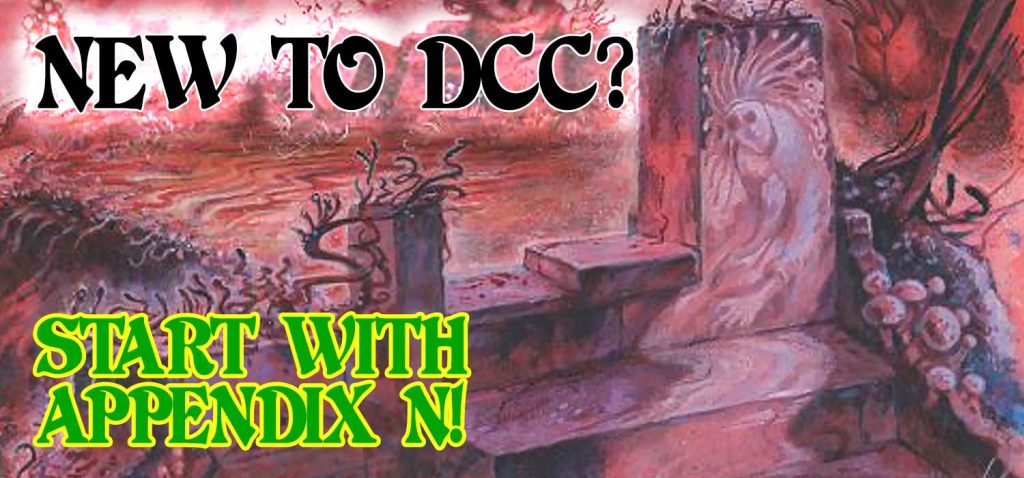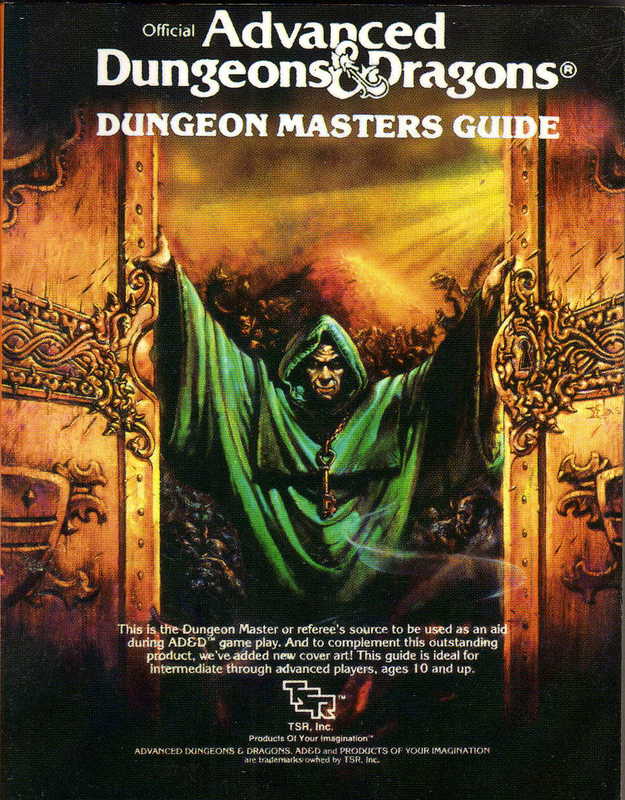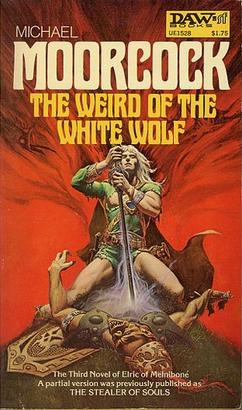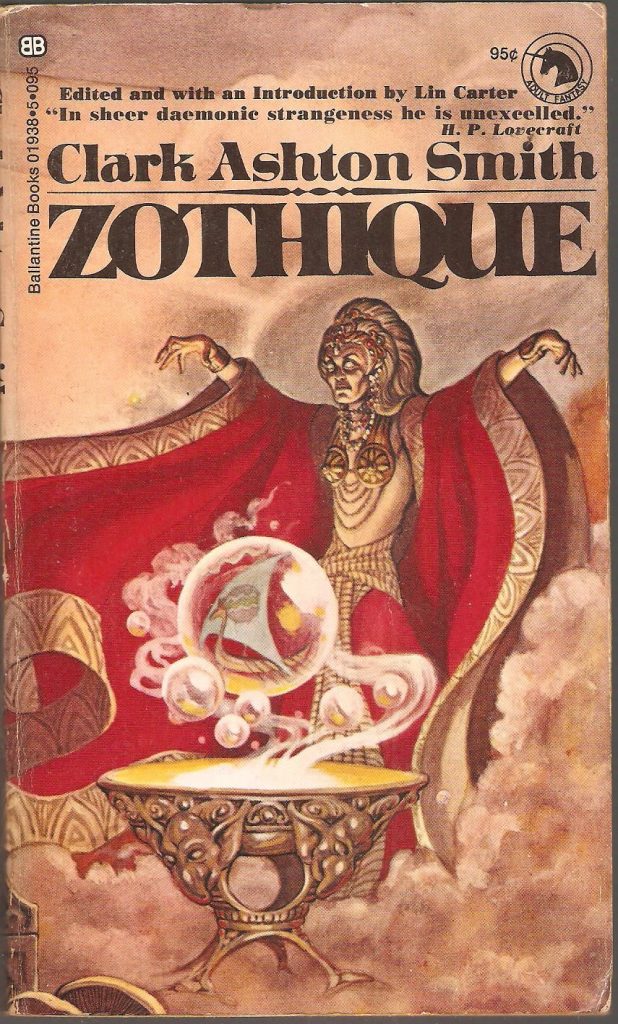
Our Appendix N Archeology and Adventures in Fiction series are meant to take a look at the writers and creators behind the genre(s) that helped to forge not only our favorite hobby but our lives. We invite you to explore the entirety of the series on our Adventures In Fiction home page.
New To DCC? Here’s Where To Start With Appendix N!
by Jeff Goad

So you’re new to DCC RPG and you might have heard that this game is heavily influenced by the Appendix N. Well what is the Appendix N? The quick answer is that it is the list of the books and authors that Gary Gygax, co-creator of D&D, said that we should check out for inspiration for our gaming. It has also become a point of fascination for those of us who want to better understand where D&D came from and what inspired different ideas and game mechanics. It can be an incredibly exciting literary hole to dive into. Trust me, I’ve been doing a podcast called the Appendix N Book Club for six years now.
If you’re looking to dip your toes into waters of Appendix N, be aware that everything on the list was published in the first 79 years of the twentieth century. There is a lot of misogyny, racism, and homophobia found in these pages. It’s okay if that isn’t for you. I believe they still have a ton of value exploring anyway, but go in being prepared for it. If you want to read the works of seminal sword and sorcery authors who have different perspectives, I encourage you to read C.L. Moore’s Jirel of Joiry and Charles R. Saunders‘ Imaro. That said, here is a quick starter guide of a few short stories to get you started:
Step 1. Read “Turjan of Miir” by Jack Vance, part of his Dying Earth series. Gary Gygax wanted a magic system that would be easy to gameify. He found it in the pages of his favorite author’s work, Jack Vance. “Turjan of Miir” takes place in a fantastic future version of Earth where the sun is bloated and getting ready to die out and where Magic and technology are essentially one. The world is littered with the ruins of ancient advanced civilizations and wizards now roam about casting spells that they forget once they say them aloud. It is also a beautiful example of world-building and reading it will prepare you for the upcoming DCC Dying Earth boxed set.
Step 2. Read Michael Moorcock’s “While the Gods Laugh,” part of his Elric saga (collected in The Weird of the White Wolf). Not only is this story super fun and exciting, it also beautifully illustrates the original Law vs Chaos alignment system that the first iteration of D&D used. Poul Anderson’s Three Hearts and Three Lions is the original source but Moorcock built on it in a way that makes it feel perfect for gaming. The nine-point system using Good vs Evil came later. In this story, we also have an adventuring party of unlikely characters coming together to seek out a magic treasure protected by supernatural creatures. Reading this story feels like you are walking into a classic 80s heavy metal album cover.


Step 3. Read Clark Ashton Smith’s “The Empire of the Necromancers”. It’s not actually in the Appendix N, but who cares! That is also part of reading the Appendix N to inspire your gaming, knowing that you can read whatever you want for inspiration regardless of what Gary Gygax recommends. (Clark Ashton Smith was later added to TSR lists of D&D inspiration and some of us believe his omission from Appendix N was an inadvertent oversight to begin with.) This 1932 story is set in Zothique, a world that was a major influence on Jack Vance’s Dying Earth. It is a great example of how to use necromancy in gaming, and also explores the ethics of it in a delightfully dark way. This also gives insight into how to incorporate horror into your fantasy gaming.
Step 4. Read Fritz Leiber’s “Bazaar of the Bizarre” (collected in Swords Against Death). This story takes place in Lankhmar, a world that DCC RPG has a boxed set and many adventures published for. The story centers on Fafhrd, a northern barbarian, and Mouser, a shifty thief. The heroically bumbling pair are featured in a ton of stories, most of which are fantastic until they become incredibly misogynistic later in Fritz Leiber’s writing career. This story does a great job of modeling urban adventuring and using DCC RPG patrons. For extra credit, the story “Ill Met in Lankhmar” does a great job of showing how to use Thieves’ Guilds and “Lean Times in Lankhmar” shows us other ways of using gods and magic.


Step 5. Read Robert E. Howard’s “The Tower of the Elephant” (collected in The Coming of Conan). Read on as a young Conan accidentally pairs up with a seasoned thief to loot a treasure from a place many have tried to loot and have never been seen since. This story shows us how to encourage the clever ideas PCs have, how to incorporate otherworldly alien elements in ways that are still firmly rooted in the fantasy world, and reminds us that not all dungeons are underground (this is a tower) or in some remote corner of the world (this one is right in the middle of a bustling city).
Reading these five stories will give you a foundation to build on that may forever alter the flavor of your gaming.

Stay connected with us on social media platform for instant update click here to join our Twitter, & Facebook
We are now on Telegram. Click here to join our channel (@TechiUpdate) and stay updated with the latest Technology headlines.
For all the latest Gaming News Click Here
